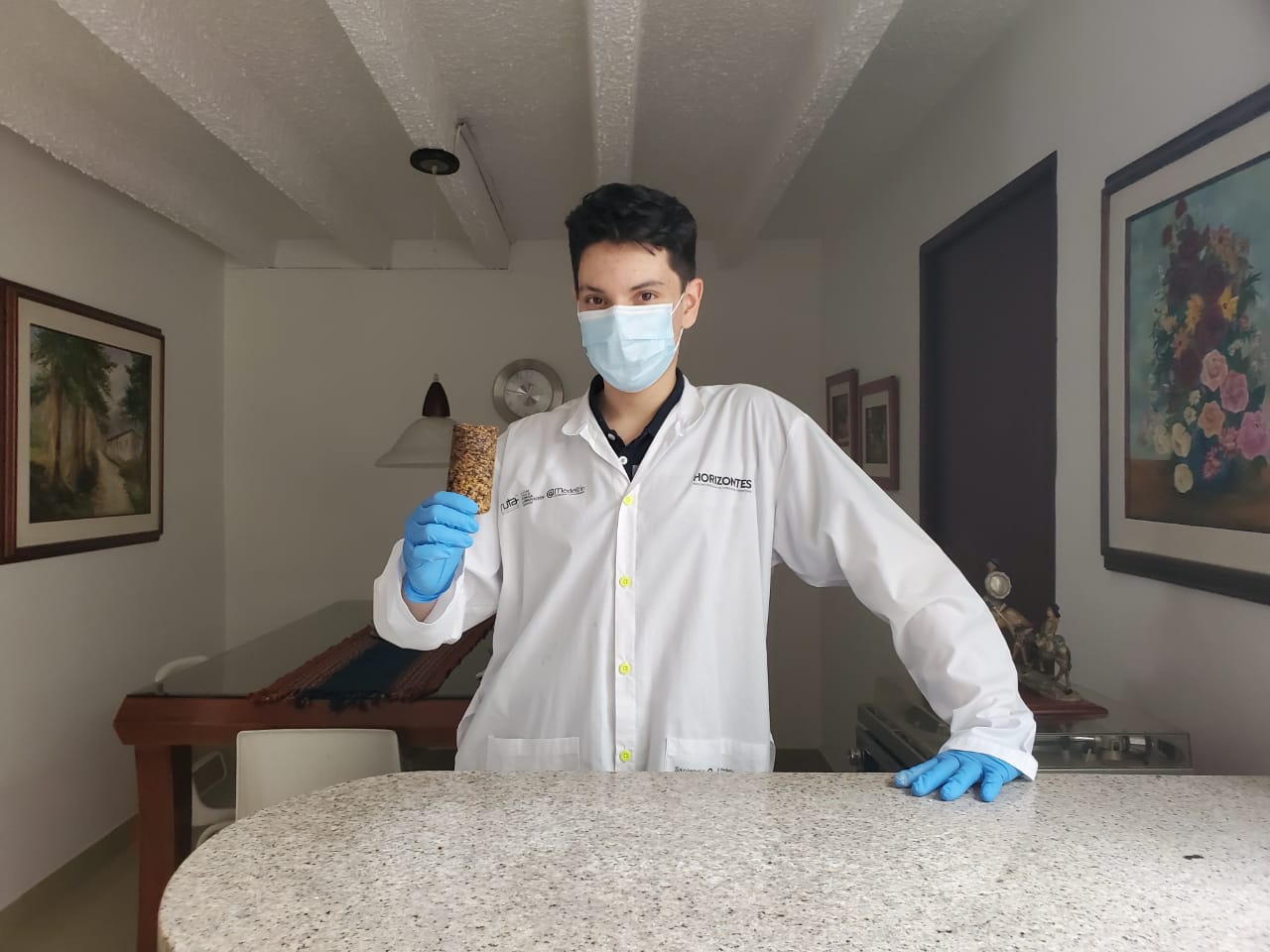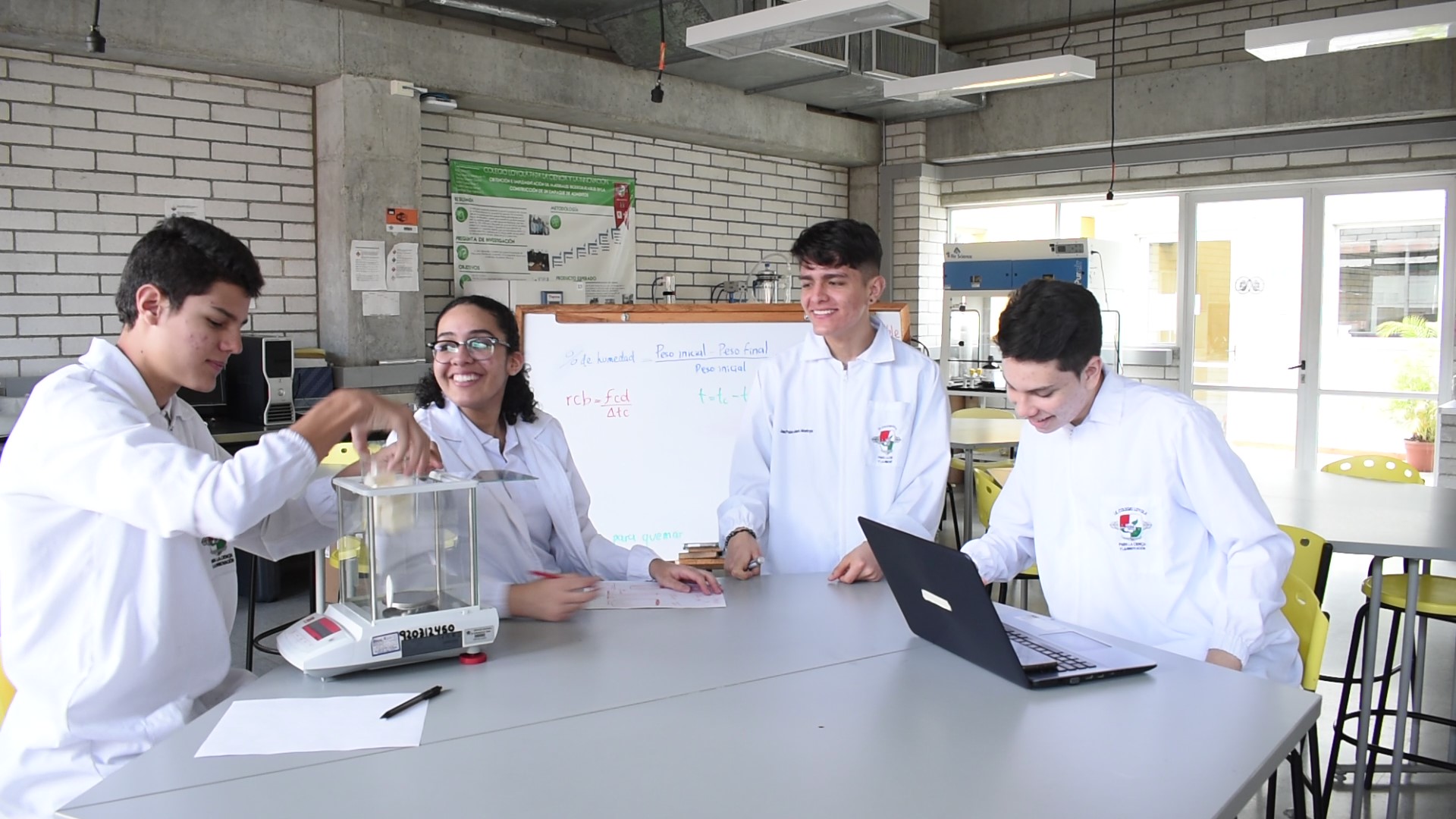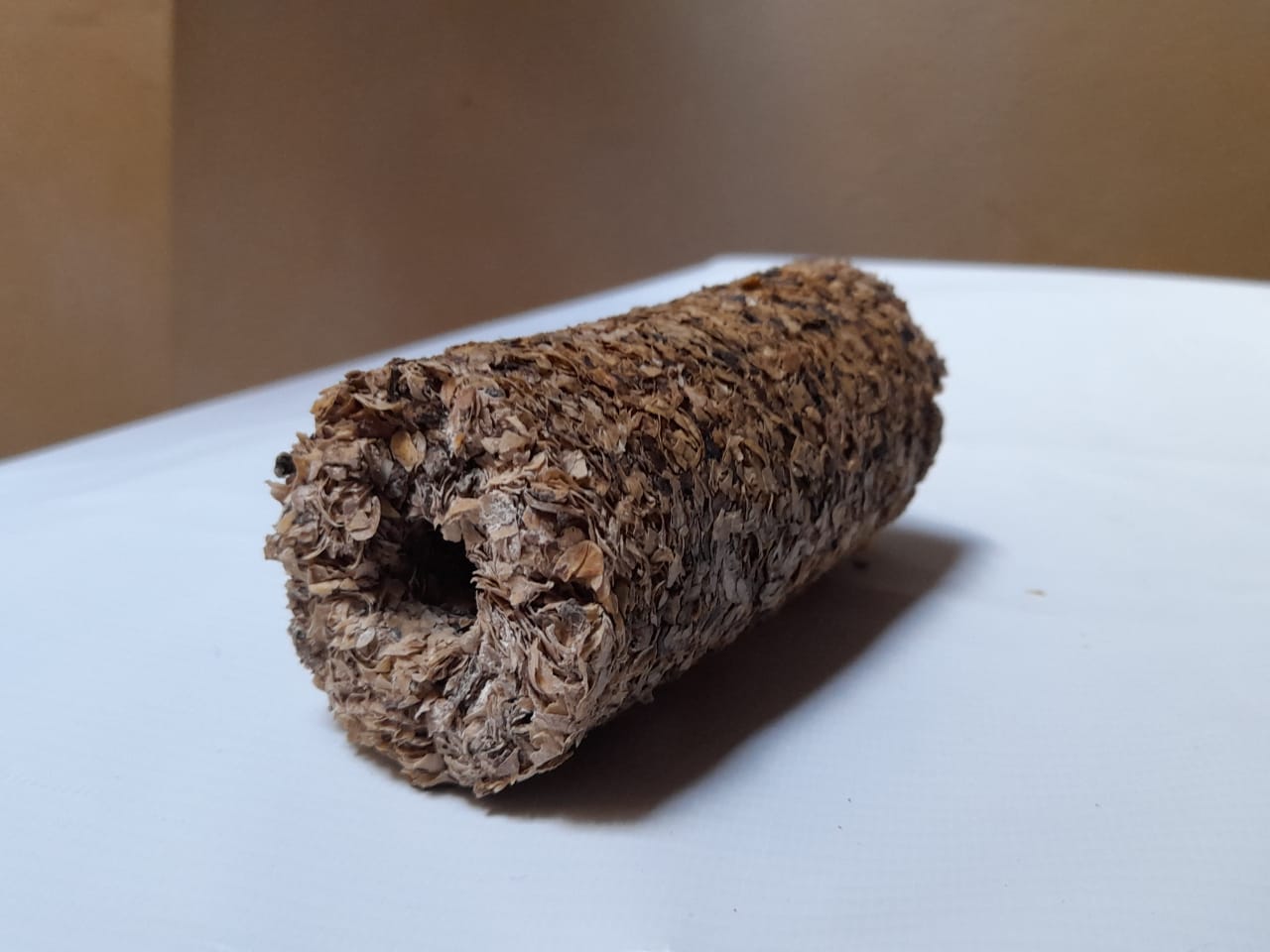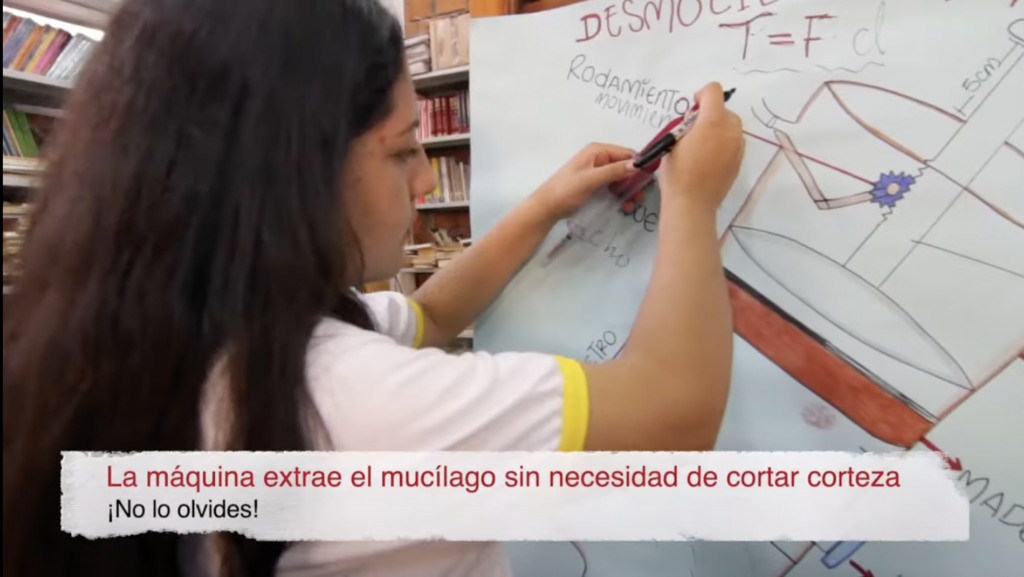Project gallery

Air Hero: coffee cisco briquette
Report sent by the Teacher
Robinson Salazar DíazSchool
Institución Educativa Colegio Loyola Para la Ciencia y la Innovación Medellín, Antioquia, ColombiaProject team composition
Ana María García Chavarría, Juan Pablo Marín Montoya, Juan Camilo Soto Marulanda, Santiago Vallejo Castaño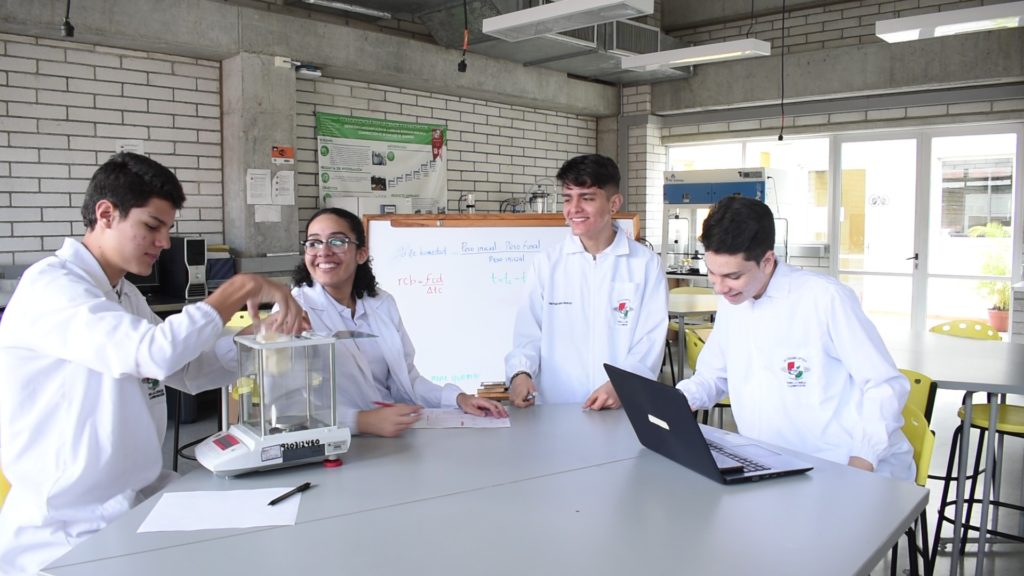
Age of students
15 to 17 years oldOther areas of knowledge
Languages (Portuguese, English, Spanish, native languages, etc.), Social Sciences or SociologyProject duration
For more than a yearSoft skills
Collaboration, Communication, Creativity, Critical thinkingSTEM areas
Engineering, Math, Sciences, TechnologyEmpathy: learning from people’s values and needs
Project objective, problem to be solved, and main actions
The main objective of the project was to obtain briquettes of coffee speck and starch, as a natural binder to be applied as a source of thermal energy.
According to the Global Economy, 11,385 tons of coal are consumed in Colombia each year. This is a non-renewable material, so its price tends to increase constantly. It is used to generate heat and in this process emits gasses that are harmful to the environment and health, such as CO₂, SOx, and CO. In the environment, CO₂ contributes 50% to the greenhouse effect, increasing the global temperature through layers composed of harmful gasses, which prevent the output of UV rays from the sun. Another damage caused by this gas is acid rain, which raises the pH of the soil, killing nitrogen-fixing microorganisms, translating into environmental imbalance. In addition, it is known that these gasses can affect our body causing respiratory and cardiovascular diseases and skin dryness.
According to SIATA, until March 2020, 19 of the 23 monitoring stations in the Aburrá Valley were in the red; which means that they present between 56 and 72µg of pollutant concentration per m³. According to the controller, 4500 people die each year from respiratory diseases, COPD affects more than 200 million, asthma up to 334 million, lung cancer with 1.8 million cases in 2012, and sleep apnea affects 1-6% of adults. Due to Acute Respiratory Infection (ARI), 22922 people died between 2011 and 2016.
In cities like Medellín, there are days of the year when many activities cannot be conducted daily due to pollution. This negatively affects people who have breathing problems such as asthma, COPD, or lung cancer.
Considering the above and to positively prevent this problem, the research project was proposed to answer the question: how to obtain briquettes with the appropriate concentration of coffee speck and starch for use as a source of thermal energy, which would produce less emission of polluting gasses during combustion?
The project was the idea of the young people, who then came to me.
Definition: better understanding of the challenges
Deepening into the issue and involvement of the school and local community
To define the problem, we conducted a systematic review of the literature, consultation, and analysis of research articles related to the topic.
We identified the issue with previous readings, support from team members, parents, environmental observations, and reviewing videos and news. Considering the institutional approach, elements related to the scientific methodology were discussed in each class. Each work team begins a process from the sixth grade onwards, the year in which they begin to recognize themselves and their peers, and along this path, they are expected to identify common tastes and interests that allow them to gradually form groups. This year, several activities aimed at team building are conducted. In the seventh grade, they begin to propose research ideas from the observation of different problems in their environment; first research ideas emerge. For the eighth grade, a systematic review of the literature is conducted that allows them to know what is related to their ideas, what was done, what difficulties were encountered, and what would be these innovations they could propose. In the ninth, the construction of the preliminary research project is conducted considering an institutional format. The execution of their projects is conducted during the 10th and 11th years, and at the end of the 11th year, they deliver as a final product a prototype of their idea, a final written document, research article (which is submitted to different spaces for dissemination of research school). It is important to clarify that at the end of the year, all teams participate in the institutional exhibition where they make known the progress of their projects to the entire community and invite external judges.
In the case of cis-fuels, once the students were clear that they wanted to work on environmental problems, they began to seek information on the topic and to debate ideas that led them to deal with the issue of fossil fuel consumption and the effect generated by the burning coal in some factories in the city and were immediately related to the problem of environmental pollution in the city. In this process, it happened that one of the parents was traveling through the coffee growing area of the country and showed that in the coffee process waste was generated and was not treated and that it was thrown anywhere. This situation was shared with the son, who in turn told it in class, and from there came the idea of being able to use this residue (cisco coffee). The search for the characteristics of speck begins and they discover that it has a calorific potential that qualifies it as a good substitute for coal.
Considering that the educational institution has a constructivist model of project-based learning, supported by collaborative work and mediated by ICT, each member of the community is, directly and indirectly, involved in the process. Each of the activities that should be conducted outside the institution and during extracurricular hours had the institutional endorsement and those responsible for each student on the team. Parents or guardians supported with resources, monitoring of field trips, and constant monitoring of each one; on several occasions they gave up their houses for the development of some of the activities (this considering that the project was conducted, for the most part, during the pandemic period). In the classes, each discipline contributed its elements that seek to have a broader view of the project conducted by each work team; This allows students to involve these elements in the enrichment of their research ideas and to understand that each subject can contribute to their processes, thus allowing interdisciplinarity and integration in projects. Students are involved in all projects, because in class they know the process of each team since they participate in the construction and discussion of each of the phases that the projects go through, being peer evaluators. In turn, at the end of the school year, a sample of projects is conducted, where each team from the institution presents the progress made throughout the year to the educational community so that everyone knows what each one has done in the different grades and can make their contributions.
In the city, activities have been developed for some years to promote the training of teachers and students in school research processes; a situation that has been a huge gain because it has strengthened this type of event at the school level. This, in turn, has allowed the realization and strengthening of school and municipal fairs. In the latter case, at the time of participation in city fairs, links and accompaniments of people are generated at the level of companies and universities at different stages of the school projects, which strengthens learning and the good development of investigations. In the case of our institution, we have an agreement with Tecnoacademia-SENA where students can conduct much of the experimentation of ideas. As much of the final product that was made during the period of social isolation, the support of a student’s parents, who allowed the briquettes to be made at home, was essential. There they had the materials for the extraction of starch, mixing of materials, elaboration, and drying in a conventional oven.
Ideation: developing creative solutions
The development of the solution
After identifying the problem, the following was performed:
– Search for information on the subject.
– Brainstorming on which of the aspects found could be addressed from the school and the conditions and resources that were available.
– Writing; considering an institutional draft format and each of the items that are requested there are molded. With the review of several theses and articles, their analysis is conducted in an institutional format.
– Realization of the research question, objectives, and methodology to be followed;
– Working hours considering each specific objective and the activities associated with each of them;
– Each process to be followed in the laboratory was accompanied by a flowchart that guided each phase of the project.
This type of diagram allowed us to show, in some cases, the decision-making about the changes that had to be made when in some tests it was not found what was expected. Each procedure was accompanied by preliminary tests, allowing the next class to make the necessary adjustments. Initially, the use of different starches as binders was proposed. As the tests were conducted, it was possible to determine that one of them, cassava starch, made it possible to obtain more compact briquettes while a greater amount of starch could be obtained in its extraction process. The drying times and temperatures of briquettes are also being rethought, as the initials were damp and contaminated with fungi and others disintegrated easily.
Once the briquettes are made, the final report is adapted, which was accompanied by the article, which consists of two sections: the first, gives an account of the entire investigative and technical process of the project; the second is responsible for the learning of each student; narrate how they went through this whole process, both in terms of research and teamwork, under the institutional methodology.
The investigation process ends with the disclosure of what has been done. During his time at the institution, Ciscombustible participated in fairs, including the Chemical Sciences Meeting in Bogotá, Research Fairs held by Tecnoacademia – SENA, Biotechnology Fair at the university institution Colegio Mayor de Antioquia, CT+i and Regeneron Fairs – ISEF, as well as Solve For Tomorrow 2020. Likewise, he was able to present his articles to popular magazines such as SENA magazine and Engenho da UPB.
Prototype: making ideas tangible
The construction of the prototype
The prototype is made continuously and is presented at the end of the year in the institutional sample of projects. They applied to different school research fairs and events in the city and other parts of the country or internationally.
Test: putting ideas out into the world
Evaluation of the process and the developed solution
The evaluation is constant; It is throughout the process and for each product or delivery by term and school year. At the end of each period, the evaluation heading presented at the beginning of the period is filled in; It includes self-assessment, co-assessment, and hetero-assessment. At the same time, students also propose their deliverables and strategies to follow to fulfill commitments, which are reconsidered in the same dynamics in which they are generated. Prototype progress and formats are delivered. Evidence of progress is presented. Practices like “elevator pitch” are constantly performed in front of other colleagues and they give feedback and co-evaluate. In other grades, spaces are opened for them to present their progress, as a mechanism for interacting with other students and strengthening their communication skills. Within these products and deliverables, each team must account for the process through the creation of a website, profiles on social networks, and a portfolio of project evidence that contains: a project draft, advances, articles, article analysis format, blog, diagrams, contributions from other areas to the project.
Reflections and pedagogical practices
The value of participating in Samsung Solve for Tomorrow
A great opportunity to publicize the project, publicize what we do within the institution, and publicize the institutional work methodology.
Achievements and advances perceived by the teacher, throughout the process
Make students recognize the value of their ideas; to achieve that something of the context can be identified from a global problem and that a local solution is transformed into a global solution. It’s not easy to approach it in the beginning; because in the beginning they want to solve everything and they don’t focus on everyday life, in their environment. Another aspect is time management; make them read and deepen their topics, especially when many articles are in another language. The latter can initially be a major obstacle as many are discouraged. Fortunately, in the case of cis-fuel, there was great motivation for the other language, so this could be resolved over time.
There are moments of uncertainty; time for various activities that come together, institutional tasks, calls and emails from Unimedios – Samsung, solving things at the last minute, and pressure from all sides. Progress reports are not delivered on time, please check repeatedly. Happiness because what was planned came out, visits to the media, dissemination of the project, magazines, fairs, meeting other people, learning new things, getting to know your students more and better, having better communication with their parents, feeling that their work is valued, traveling and getting paid for it, which is also your job... Really, I just like it more, I love it, I love it, I’m passionate about it; pure constant learning regardless of the difficulties that arise, in the end, there is the satisfaction of doing something you enjoy. I wouldn’t change a thing in the process.
Challenges faced
Make students recognize the value of their ideas; to achieve that something of the context can be identified from a global problem and that a local solution is transformed into a global solution. It’s not easy to approach it in the beginning; because in the beginning they want to solve everything and they don’t focus on everyday life, in their environment. Another aspect is time management; make them read and deepen their topics, especially when many articles are in another language. The latter can initially be a major obstacle as many are discouraged. Fortunately, in the case of cis-fuel, there was great motivation for the other language, so this could be resolved over time.
There are moments of uncertainty; time for various activities that come together, institutional tasks, calls and emails from Unimedios – Samsung, solving things at the last minute, and pressure from all sides. Progress reports are not delivered on time, please check repeatedly. Happiness because what was planned came out, visits to the media, dissemination of the project, magazines, fairs, meeting other people, learning new things, getting to know your students more and better, having better communication with their parents, feeling that their work is valued, traveling and getting paid for it, which is also your job... Really, I just like it more, I love it, I love it, I’m passionate about it; pure constant learning regardless of the difficulties that arise, in the end, there is the satisfaction of doing something you enjoy. I wouldn’t change a thing in the process.
Learning incorporated into the teacher’s routine and practice
I have already started to involve elements of design thinking in the new research processes; this gave me a new look at the students’ ideas. I continue with what has to do with scientific methodology but let’s say I returned something like “recharged”. It’s been an interesting combination that started to work for me because I see a new generation thinking, for example, about the issue of empathy when they start to propose their research ideas. With the learning I had with Ciscombustible, in addition to telling the other students about the awards won by their peers, I tell a lot about how they managed to stay together for so long and how they always had a clear horizon and that as a team they wanted to achieve that goal that they had set for themselves and that whatever difference they had, they were able to overcome it because that common goal was more important.
